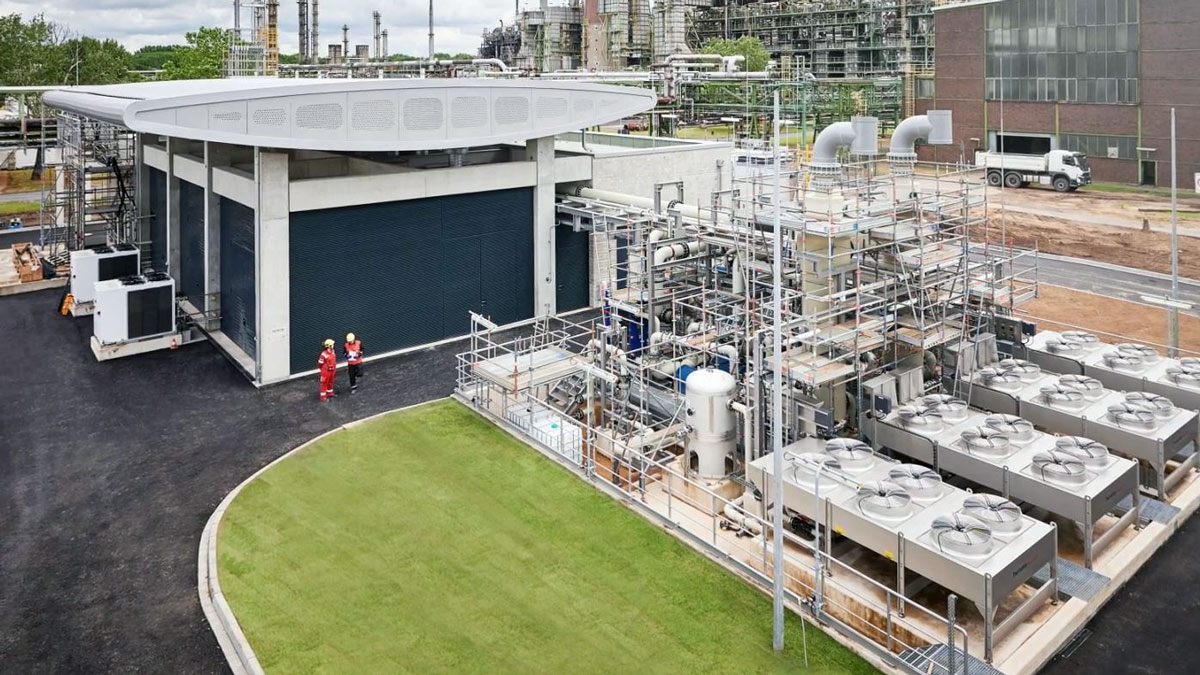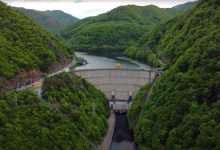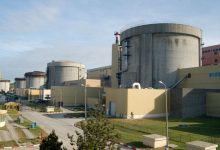Europe’s Largest Hydrogen Electrolyser
Shell has started up Europe’s largest hydrogen electrolyser of its kind at its energy and chemicals park Rheinland, in Germany. Shell sees great potential for the use of hydrogen in a range of sectors, from transport to industry. As governments, businesses and energy consumers continue to align on the need for net-zero emissions in the future, support for hydrogen is gathering pace.
As part of the Refhyne consortium and with funding from the European Commission, the 10-megawatt PEM electrolyser uses renewable energy to initially produce up to 1,300 tonnes of green hydrogen a year.
The green hydrogen will initially be used to produce fuels with lower carbon-intensity at the refinery and Shell are also working to enable the green hydrogen to help decarbonise other sectors such as road transport.
The fully operational plant is the first to use this technology at such a large scale in a refinery and plans are already under way to expand the capacity of the electrolyser from 10 megawatts to 100 megawatts.
In its Powering Progress Strategy, Shell set a target to become a net-zero-emissions energy business by 2050, in step with society. As part of their plan, they will transform five core refineries into integrated Energy and Chemicals Parks by 2030.
Transforming these refineries will mean using more recycled and renewables feedstocks, such as hydrogen and waste oils and processing less crude oil. As a result, by 2030 Shell will reduce production of traditional fuels by 55% and will produce more of the low-carbon fuels, chemicals, and energy products that the customers need.
These changes to Shall’s product portfolio will help reduce the emissions generated while making its product and also those from the use of these products. The start-up of the Refhyne electrolyser is a great step as Shell accelerates its journey to meeting the evolving energy needs of our customers.
Hydrogen in the global energy system
Shell sees great potential for the use of hydrogen in a range of sectors, from production to industry.
Shell’s ultimate goal is to produce green hydrogen, through electrolysis, using renewable power such as wind and solar. But moving quickly in the energy transition means both green and blue hydrogen can play a role in the decade ahead. Blue hydrogen is produced from natural gas and later decarbonised, using carbon capture and storage.
To keep up with increasing hydrogen and renewable power demand, blue hydrogen can provide an interim solution to help build the hydrogen ecosystem while still lowering emissions.
SHELL’S CURRENT PROJECTS
Germany: REFHYNE electrolyser
In July 2021, Shell has opened the REFHYNE electrolyser at our chemicals and energy plant Rheinland, Germany. With vital funding of the EU’s Fuel Cells and Hydrogen Joint Undertaking, this 10MW proton exchange membrane (PEM) electrolyser is the largest of its kind in Europe. The electrolyser was built by ITM Power and will be operated by Shell, producing 1,300 tonnes of green hydrogen per year from renewable energy. Plans are already in place to expand the capacity of the electrolyser to 100MW.
Netherlands: NortH2
Shell, together with its consortium partners, Gasunie and Groningen Seaports, is aiming to build the largest European green hydrogen project in the Netherlands by 2040. If given the go-ahead, NortH2 will be capable of producing more than 800,000 tonnes of green hydrogen by electricity generated from a 10 GW offshore wind farm in the North Sea. In December 2020, RWE and Equinor joined the consortium.
Netherlands: Rotterdam Green Hydrogen Hub
Shell is working together with partners to create a green hydrogen hub in the Port of Rotterdam. In July 2020 Shell and Eneco were awarded a tender for the 759 MW Hollandse Kust Noord offshore wind project in the North Sea, which will become operational in 2023. Shell is planning to build a 200 MW electrolyser in the Port of Rotterdam, which is intended to start operations by 2023 to produce about 50,000 – 60,000 kg of hydrogen per day. The green hydrogen produced will initially be used at the Shell refinery in Pernis to partially decarbonise the production of fossil fuels. A final investment decision on the electrolyser is yet to be taken.
Netherlands: Emmen
A 12 MW solar park is being built as a part of the energy hub GZI Next. Apart from producing solar energy, this energy hub will produce hydrogen as well.
China: Zhangjiakou City
In November 2020 Shell unveiled its first commercial hydrogen project in China. This infrastructure included a 20 MW hydrogen electrolyser which will see green hydrogen produced from abundant wind and solar resources in Hebei province. The joint venture with Zhangjiakou City will be used to support the development of hydrogen and clean energy in the region as well as supply hydrogen refuelling stations in Zhangjiakou, which is one of the co-hosts of the 2022 Beijing Winter Olympics.
Types of hydrogen
Producing low or zero-emission hydrogen is crucial to ensure its potential as a clean form of energy. Most of the hydrogen available today is produced using energy from hydrocarbons, particularly natural gas. Hydrogen produced in this way is known as ‘grey’ hydrogen.
While this process generates significant carbon emissions, it can be made almost emission-free by using carbon capture and storage to store any carbon emissions that are produced safely back underground. The product is then known as ‘blue’ hydrogen.
Hydrogen can also be made via electrolysis, by splitting water into oxygen and hydrogen using electricity from renewable sources. When produced like this, the process is also almost emission-free, and the hydrogen is known as ‘green’ hydrogen.






